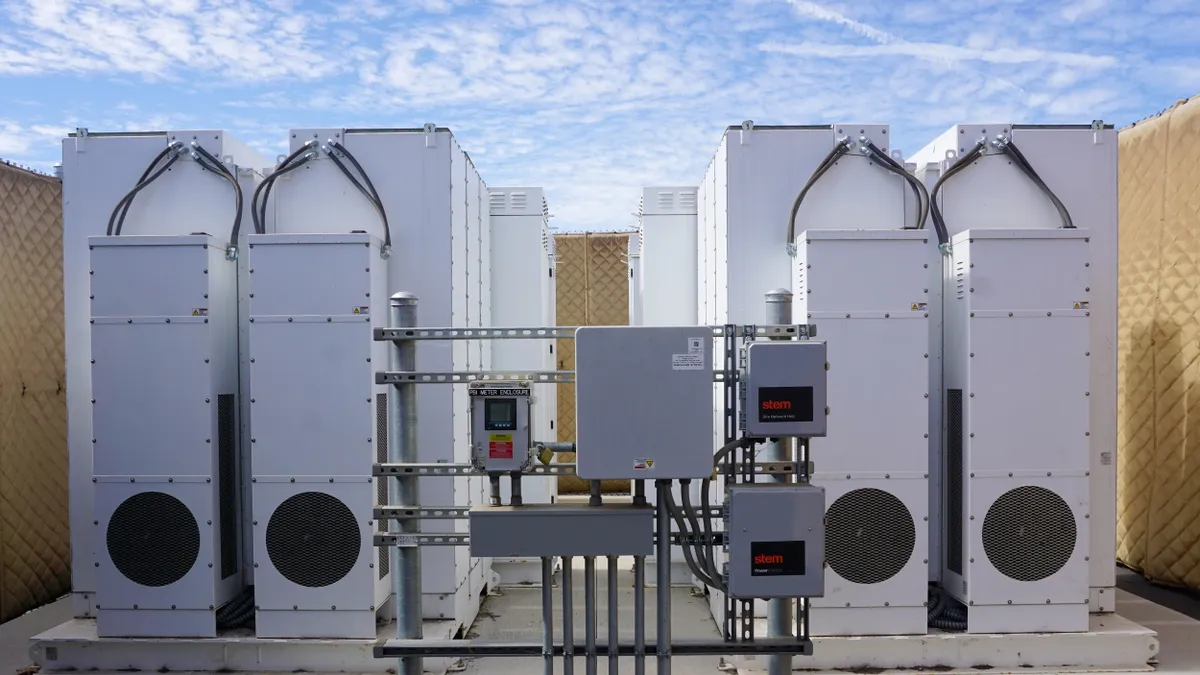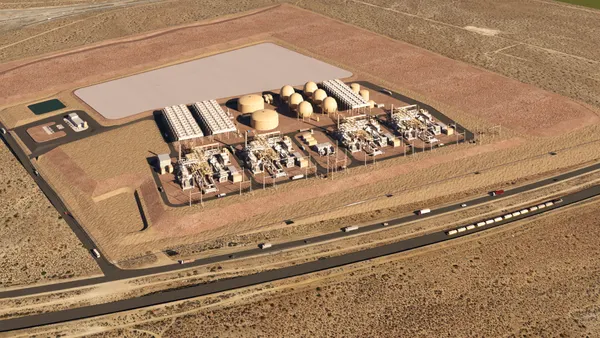Dive Brief:
- The California Public Utilities Commission (CPUC) on Thursday approved a $1.2 billion, 537.5 MW/2,150 MWh energy storage contract between Southern California Edison (SCE) and Ameresco, the latest in a string of efforts to ensure grid reliability during the summer months.
- The contract includes energy storage projects at three existing SCE substations in the Big Creek-Ventura and the Los Angeles Basin areas, which are scheduled to come online by August.
- "We are facing a large gap in the amount of resources we have to ensure reliability of our current grid in the face of a more extreme, climate-driven weather event," CPUC President Marybel Batjer said at the commission's Thursday meeting. "In this case, Edison has been able to leverage its unique position as an [investor-owned utility] and distribution center operator to move forward with a shovel-ready project that can respond to our emergency procurement needs."
Dive Insight:
Last March, the CPUC directed the state's investor-owned utilities to procure resources — particularly energy storage — that would effectively boost their planning reserve margin from 15% to between 17.5% and 19% for the summers of 2021 or 2022. In July, California Gov. Gavin Newsom, D, issued an emergency proclamation asking the agency to help accelerate the deployment of clean energy and storage projects that could smooth over potential capacity shortages.
In October, SCE requested commission approval of its 537.5 MW contract for utility-owned energy storage projects which would be able to provide capacity during peak and net peak hours during the summer of 2022. In a statement released at the time, developer Ameresco said the three substation systems, which have a four-hour duration, are "a novel approach for incorporating advanced energy storage at the distribution level to solve overall system capacity and reliability needs."
The CPUC noted in its resolution that SCE's proposal is based on leveraging its status as a distribution utility to bring the projects online before they are formally interconnected to the California Independent System Operator grid by initially connecting them to non-CAISO facilities as distribution assets. The commission acknowledged that multiple parties were wary of this plan, as it suggested the utility was attempting to get around the interconnection process, and of how that could affect other parties currently in the interconnection queue.
However, regulators eventually concluded that the utility's plan — including implementing substation upgrades that would increase interconnection capacity — would minimize those effects.
"We'll be vigilant in ensuring that Edison makes sure that existing staff resources are not diverted to [the projects] from third-party interconnection or procurement work, which is also extremely important right now," Batjer said.
"While I look forward to a time when we no longer need to consider emergency procurement… I also appreciate that these energy storage contracts represent a significant amount of new capacity that will help prevent potential widespread service outages," while contributing to SCE's higher planning reserve margin, CPUC Commissioner Darcie Houck said at the meeting.
An additional benefit of the projects is that they are in the Los Angeles Basin, CPUC Commissioner Martha Guzman Aceves added. The commission is currently reviewing how to wean off the Aliso Canyon natural gas storage facility, a process that "will be extremely dependent on more resources in the Basin," she said.















